The Nikon AF Nikkor 85mm 1: 1.8D is considered a classic portrait lens, but it can be used for a wide variety of other photographic applications. Nikon AF Nikkor 85mm 1: 1.8D (we will call it Nikon 85mm F / 1.8D for short) was introduced in March 1994 and became a replacement for the older version - Nikon AF Nikkor 85mm 1: 1.8 (no letter 'D', NON-D type).
In total, Nikon has 6 such lenses:
- Nikon 85mm 1: 1.8 AF NikkorDecember 1987
- Nikon 85mm 1: 1.8D AF NikkorMarch 1994, Japan or Thailand
- Nikon 85mm 1: 1.8G AF-S IF SWM NikkorJanuary 2012
- Nikon 85mm 1: 1.4D AF NikkorNovember 1995
- Nikon 85mm 1: 1.4GN AF-S Nikkor SWM IF Nano Crystal CoatAugust 2010
- Nikon 85mm 1: 1.8 S Nikkor Z, July 2019, for mirrorless cameras
All these lenses deserve due attention and have their own characteristic features.
The lens has a short but informative name: Nikon AF Nikkor 85mm 1: 1.8D, where 'AF' indicates that the lens is autofocus, but autofocus only works when available focus motor in the camera itself, '85mm ' indicate the focal length, 'F / 1.8 ′ to the maximum aperture... Bukovka 'D'indicates that the lens transmits the focusing distance to the camera, which is very important when working with flashes.
Main technical characteristics of Nikon AF Nikkor 85mm 1: 1.8D:
| Review Instance Name | Nikon AF Nikkor 85mm 1: 1.8D 2023332 |
| Basic properties |
|
| Front Filter Diameter | 62 mm, metal thread for filters |
| Focal length | 85 mm, EGF for Nikon DX cameras is 127.5 mm |
| Zoom ratio | 1 X (this is a fixed lens without the ability to change the focal length) |
| Designed by | for film cameras Nikon FX |
| Number of aperture blades | 9 rounded petals |
| Tags | window with focusing distance in meters and feet, depth of field scale for F / 16 and F / 11. Infrared Label |
| Diaphragm | from f / 1.8 to f / 16. The lens has an aperture ring (Non-G - lens type) |
| MDF (minimum focusing distance) | 0.85 m, maximum magnification ratio 1: 9.2 |
| The weight | 380 g |
| Optical design | 6 elements in 6 groups. The lens does not use special optical elements. |
| Lens hood | Hn-23, supplied, screwed into the thread under the filters |
| Period | from March 1994 to 2012, later replaced by Nikon 85mm 1: 1.8G AF-S IF SWM Nikkor |
| Manufacturer country | Made in Thailand (some lenses were also made in Japan) |
| Instructions | See |
| Price | View -> |
Nikon AF Nikkor 85mm 1: 1.8D, with its light weight, is very compact in itself, you can always take it with you and get great photos.
The first thing you pay attention to when you pick up the Nikon 85mm F / 1.8D is its excellent build. Also, I was impressed by the special beauty of the front lens.
Highlights to watch out for
- This the lens can be used on full-frame Nikon FX cameras. It will work great on both Nikon film cameras and Nikon FX full-frame digital cameras.
- Auto focus with Nikon 85mm f / 1.8D lens available only when using him on cameras with built-in motor focusing. An exact and complete list of Nikon CZKs that support auto focus with 'AF' lenses (such as this one) can be found in the 'Auto focus on Nikon cameras'.
- Maximum relative aperture F / 1.8. This is very important aperture. The difference between F / 1.4 and F / 1.8 is 2/3 stops.
- The focal length of the lens is 85mm, a classic focal length for portraits. On Nikon DX cameras EGF lens will be 127,5 mmwhich is also good for portraiture.
- When focusing, the front lens is completely stationary- it does not spin and does not ride back and forth. When focusing, only the rear lens unit moves, this is called the Rear Focusing System. With this lens it will be possible to use various filters without problems.
- The lens has manual aperture ring. To be able to control the value aperture from camera or for automatic installation aperture on modern central control valves, you need to turn the control ring to F / 16 and fix it with a special lever, which is located to the right of the marks aperture. If this is not done, then on a number of cameras, the display will display an error - 'fEE' (ring is not installed aperture) Some cameras having diaphragm rheostatallow you to control the aperture using the ring aperturebut only in metering modes exposure 'M' and 'A'. You can read more about this issue in the section on Non-G Lenses. Ring aperture rotates with clicks, the values F / 1.8, 2.8, 4, 5.6, 8, 11, 16 are plotted on it; set the intermediate value between pairs of numbers using the ring aperture impossible. Intermediate values can only be set using the camera menu.
- Complete with lens there is a metal hood, which really helps in the fight against flare and glare. The lens hood is screwed into the filter. I use protective filter, screwed onto the lens, and a hood is screwed into the filter, with such a bundle I do not install a protective cap.
- Nikon 85mm F / 1.8D has a window with a focus distance scale in meters and feet, a depth of field scale for F / 16, F / 11 and a mark for working in the infrared spectrum.
Bad sides:
- The lens is very pronounced chromatic aberration on open diaphragms. HA in the field of sharpness disappear only from the aperture F / 4.0. Therefore, if you need a well-designed sharp image without any kind of ghosting on contrasting details in the field of sharpness, the lens will not be able to provide the desired result at values from F / 1.8 to F / 4.0. Personally, I put up with aberrations in portraiture, especially when there are few contrasting details.
- The lens does not have a focus motor, as mentioned above. But still you need to consider that it was designed back in 1994, and then no one thought that Nikon would release a couple of non-powered cropped cameras. You can read more about the focusing motor. here.
- The biggest drawback of this lens I personally consider the factor that he has a very strong competitor in the face Nikon 85mm f / 1.4 AF-D и Nikon 85mm f / 1.8G AF-S Nikkor. In any case, F / 1.8 will lose in luminosity and in figure F / 1.4. At Nikon 85mm f / 1.4 AF-D HA disappear already at F / 2.0, while Nikon 85mm F / 1.8D HA disappear only on F / 4.0. And buying a Nikon AF Nikkor 85mm f / 1.8D will always resent the fact that there is a much better portrait lens. On the Internet you can find millions of dedicated pages. battles Nikon 85mm f / 1.8D and Nikon 85mm f / 1.4 AF-D, and 1.8D wins only at its price. If your camera does not have a focus motor, then a cheap version of such a lens is present only in the face Nikon 85mm f / 1.8G AF-S Nikkor and very expensive Nikon 85mm F1.4G AF-S.
Sample Photos
On the camera Nikon D80:
On the camera Nikon D200:
On a film camera Nikon AF N8008s:
Lens focusing speed F / 1.4dCompared to the Nikon 85mm F / 1.8D, exactly the same. I conducted an experiment: put two cameras side by side, on the first F / 1.4d, on the second F / 1.8D, when you press the focus button, both lenses focus equally quickly from MDF to infinity and vice versa. Most likely, all three lenses are F / 1.8 AF, F / 1.8D, F / 1.4d have the same focusing speed, which may differ slightly from the camera on which the lens is used. Also, the Nikon 85mm F / 1.8D has a faster focusing speed compared to F / 1.8g и с F / 1.4GN
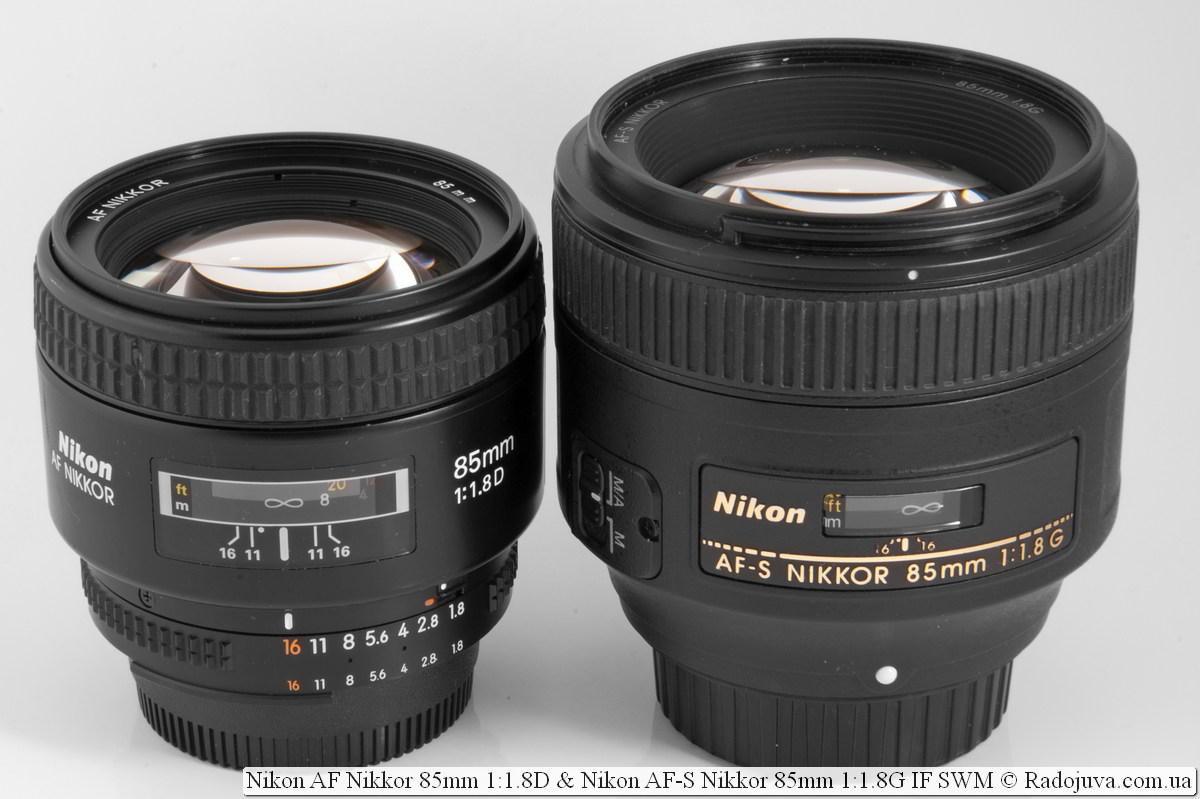
Nikon AF Nikkor 85mm 1: 1.8D and Nikon AF-S Nikkor 85mm 1: 1.8G IF SWM
Image quality
At the lens no distortion - this means that the lens ideal for photographing portraits, it does not distort the picture, but also the faces of people. On FX cameras, vignetting disappears only at F / 5.6. Nikon 85mm F / 1.8D sharp from 1.8. The best sharpness falls on apertures from F / 4.0 to F / 8.0, if you close the aperture above F / 8.0, you can only increase the depth of field, since diffraction takes effect.
The lens gives a slightly cool tint. The lens is not very friendly with back and side light. And, for a portrait lens, bokeh is very important, Nikon 85mm F / 1.8D bokeh is normal, sometimes rough. I would like better bokeh quality from a portrait lens. The lens has 9 aperture blades (the number of petals is above average), which allows him to give fairly rounded circles in the blur zone.
My experience
I really love this lens - it is compact, well built, fast focusing and sharp. Of course, due to the lack of modern technologies in it, the Nikon 85mm F / 1.8D is morally outdated, and its updated model Nikon AF-S Nikkor 85mm 1: 1.8G IF SWM almost everything is better. I recommend the Nikon AF Nikkor 85mm 1: 1.8D to anyone looking for a real portrait lens for little money. The Nikon AF Nikkor 85mm 1: 1.8D is the most budget-friendly model of the 'real native tailor'. With this lens, the resulting frames will be much more interesting than with standard fifty dollars.
Differences between Nikon AF Nikkor 85mm 1: 1.8D (1.8D) and Nikon AF-S Nikkor 85mm 1: 1.8G IF SWM (1.8G)
A detailed description of the differences between these two lenses can be viewed here.
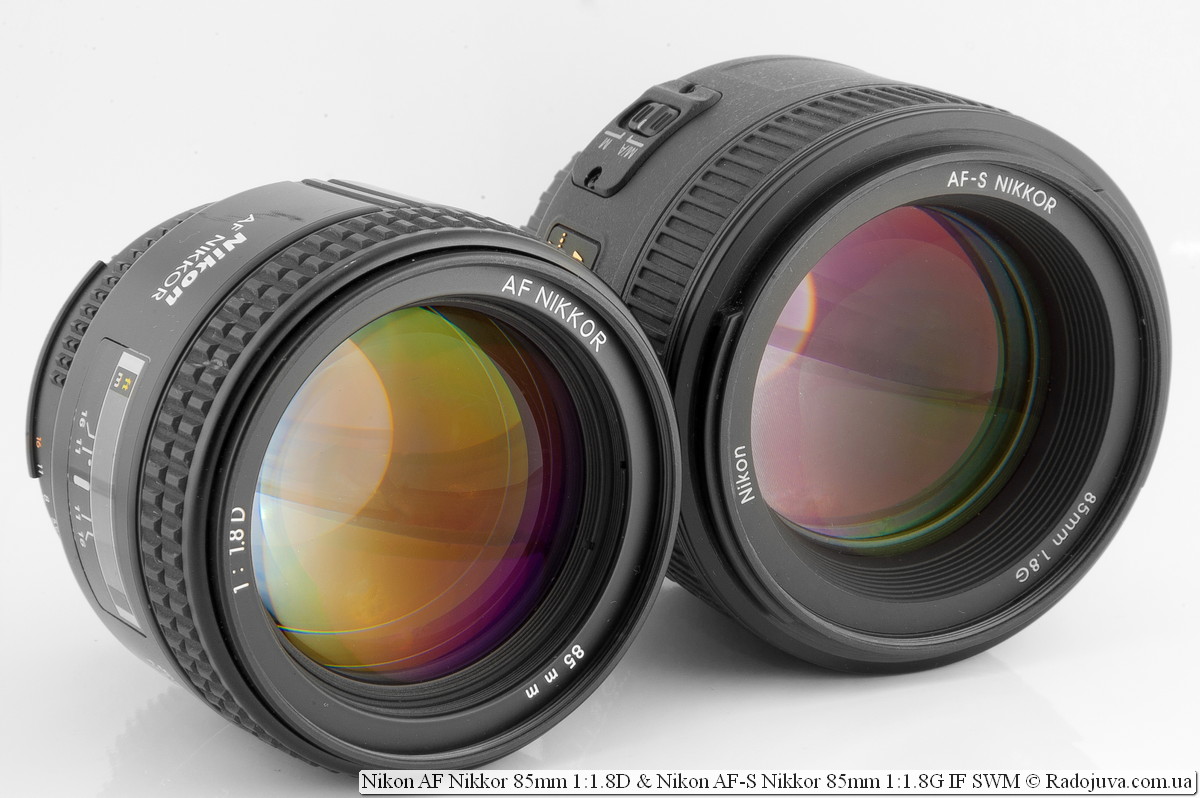
Nikon AF Nikkor 85mm 1: 1.8D and Nikon AF-S Nikkor 85mm 1: 1.8G IF SWM
This is what the entire line of Nikon Nikkor 85 / 1.8 lenses with auto focus support looks like:
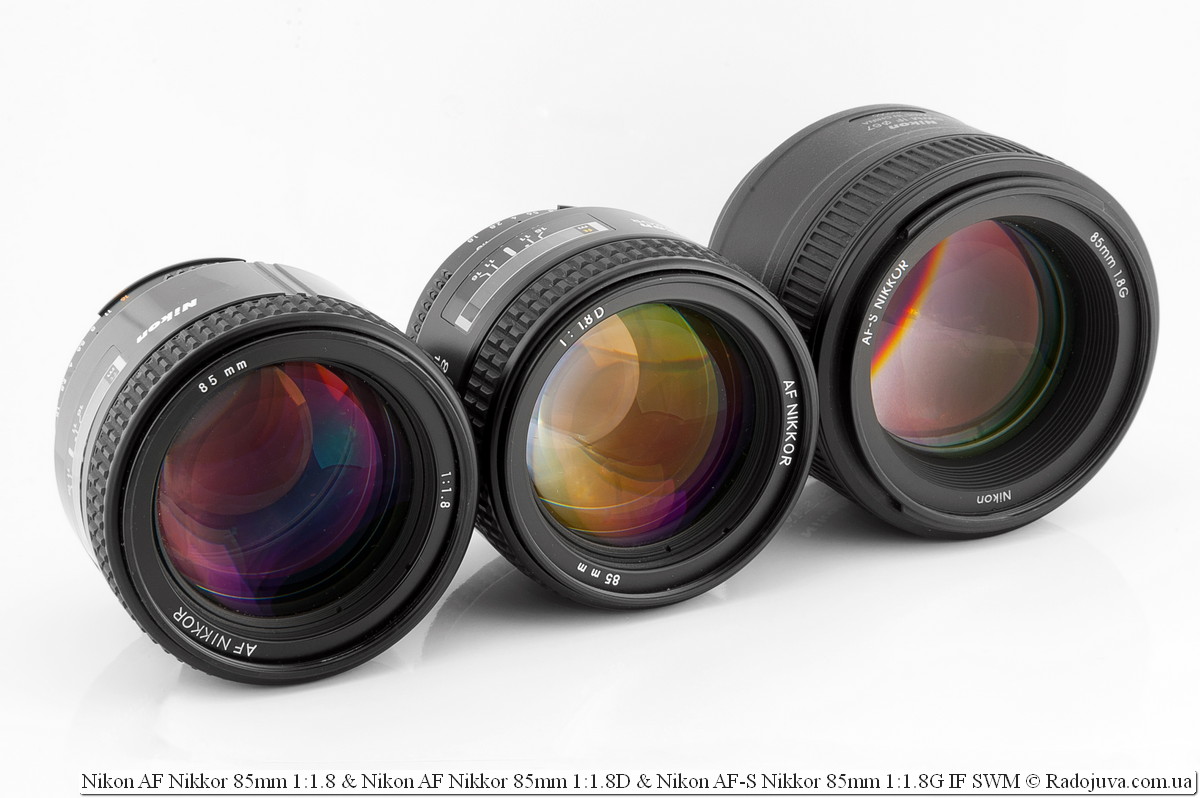
Three generations of Nikkor 85 / 1.8 class lenses: Nikon AF Nikkor 85mm 1: 1.8 и Nikon AF Nikkor 85mm 1: 1.8D (from this review) and Nikon AF-S Nikkor 85mm 1: 1.8G IF SWM
All autofocus 85s
Choosing a good 85mm portrait lens is very important for a large number of photographers. I pay a lot of attention to this issue, therefore I have prepared this list of all such autofocus lenses for full frame cameras with F <= 2 and a focal length of about 85 mm.
Nikon (F, Z mounts)
- Nikon 85mm 1: 1.8 AF Nikkor [December 1987]
- Nikon 85mm 1: 1.8D AF Nikkor [March 1994, Thailand/Japan]
- Nikon 85mm 1: 1.4D AF Nikkor [November 1995]
- Nikon 85mm 1: 1.4GN AF-S Nikkor SWM IF Nano Crystal Coat [August 2010]
- Nikon 85mm 1: 1.8G AF-S IF SWM Nikkor [January 2012]
- Nikon Nikkor Z 85mm 1: 1.8 S [July 2019]
- Nikon Nikkor Z 85mm 1: 1.2 S [January 2023]
Canon (EF, RF mounts)
- Canon LENS EF 85mm 1:1.2 L USM [September 1989
- Canon LENS EF 85mm 1: 1.8 USM [July 1992]
- Canon LENS EF 85mm 1:1.2 L II USM [March 2006]
- Canon LENS EF 85mm 1:1.4 L IS USM [November 2017]
- Canon lens RF 85mm F1.2L USM [May 2019]
- Canon lens RF 85mm F1.2L USM DS (DEFOCUS SMOOTHING) [October 2019]
Yongnuo/YnLens (different mounts)
- Yongnuo YN85mm F1.8 (YN85mm F1.8) [9/6, Canon EF, February 2017]
- Yongnuo YN85mm F1.8 (YN85mm F1.8N) [9/6, Nikon F, May 2019]
- Ynlens YN85mm F1.8S DF DSM (YN85mm F1.8S) [9/8, Sony E, August 2020]
- Ynlens YN85mm F1.8R DF DSM (YN85mm F1.8R) [9/8, Canon RF, May 2021]
- Ynlens YN85mm 1:1.8Z DF DSM (YN85mm F1.8Z) [9/8, Nikon Z, March 2022]
- Yongnuo 85F1.8S DF DSM [9/8, Sony E, August 2022]
Sony / Sony Zeiss ZA / Minolta (E / FE, A mount)
- Sony FE 1.4/85 GM (SEL85F18GM) [February 2016]
- Sony FE 1.8/85 (SEL85F18) [February 2017]
- Sony SAL85F14Z / Carl Zeiss Planar 1,4 / 85 ZA T* [June 2006]
- Minolta AF 85mm 1:1.4 (22) (AF lens 85) / Minolta Maxxum / Dynax / G / G+D / G+RS / G+D+LE and other versions of the same lens, A mount [1987]
Sigma (different mounts)
- Sigma EX 85mm 1: 1.4 DG HSM (two sub-versions with different body finishes, for Canon EF, Nikon F, Pentax K, Sony A, February 2010)
- Sigma 85mm 1: 1.4 DG | A [Art] (for Canon EF, Nikon F, Sigma SA, Sony E, Leica L, September 2016)
- Sigma 85mm 1: 1.4 DG DN | A [Art] (for Sony E, Leica L, August 2020)
Viltrox (different mounts)
- Viltrox PFU RBMH 85mm F1.8 STM (Sony E/FE + Fujifilm X, 2018)
- Viltrox AF 85/1.8 STM ED IF (Nikon Z, Canon RF, December 2020)
- Viltrox AF 85/1.8 II STM ED IF (Sony E/FE + Fujifilm X, July 2020, light version XNUMX)
Pentax (K mount)
- SMC Pentax-FA* 1:1.4 85mm IF AUTO FOCUS PENTAX 85 [1992]
- HD PENTAX-D FA * 85mm 1: 1.4 ED SDM AW [May 2020]
Samyang / Rokinon (different mounts)
- Samyang AF 85 / 1.4 EF (for Canon EF, scheme 9/7, June 2018)
- Samyang AF 85/1.4F (for Nikon F, scheme 9/7, April 2019)
- Samyang AF 85 / 1.4 FE (for Sony E, scheme 11/8, March 2019)
- Samyang AF 85 / 1.4 RF (for Canon RF, scheme 11/8, May 2020)
- Samyang AF 85 / 1.4 FE II (for Sony E, scheme 11/8, July 2022)
Meike (Canon EF, Nikon F, Sony E, Nikon Z, FujiFilm X)
- MEIKE 85mm AF 1: 1.8 [review] (Canon EF / Canon EF-S, April 2018)
- MEIKE 85mm AF 1: 1.8 [review] (Nikon F, Aug 2020)
- MEIKE 85mm 1:1.8 Auto Focus Lens FF STM [review] (for Sony FE/E + Nikon Z, Canon RF, FujiFilm X, June 2022 + March 2023)
- MEIKE 85mm 1:1.4 Auto Focus Lens FF STM (for Sony FE/E + Nikon Z, September 2023)
Zeiss (various mounts)
- Zeiss Sonnar 1.8 / 85 T * (Batis 1.8 / 85) [April 2015, built-in stabilizer, Sony E/FE mount, 11/8]
- Carl Zeiss Planar 1,4/85 ZA T* (Sony SAL85F14Z) [June 2006, Sony A/Minolta A mount, 8/7]
- Carl Zeiss Planar 1,4 / 85 T * [November 2002, Contax N mount, 10/9]
Tamron (different mounts)
- Tamron SP 85mm F/1.8 Di VC USD Model F016 (for Canon EF, Nikon F, Sony A [without VC function], March 2016)
Tokina (Sony E / FE mount)
- Tokina atx-m 85mm F1.8 FE (for Sony E, most likely a complete analog Viltrox PFU RBMH 85mm F1.8 STM, January 2020)
AstrHori (Sony E/FE mount)
-
AstrHori AF 85mm 1:1.8 [December 2022]
Panasonic (L mount)
- Panasonic LUMIX S 1: 1.8 / 85mm [November 2020]
Separately, you can still highlight non-classic 85s:
- macro lens Canon Lens RF 85mm F2 MACRO IS STM [2020, RF]
- longer LEICA APO-SUMMICRON-SL 1: 2/90 ASPH. (2018, Leica l)
- less aperture Sony 85 / 2.8 SAM (SAL85f28) [2010, A]
- shorter SMC PENTAX FA 1:1.8 77mm Limited (1997, K)
- shorter HD Pentax-FA 1: 1.8 77mm Limited (2021, K)
- shorter Samyang AF 75 / 1.8 FE (2020, E) + Samyang AF 75/1.8X (2023, X)
- cropped Samsung Lens 1:1.4 85mm ED SSA i-Function [2011, NX]
- cropped and longer FUJIFILM FUJINON LENS SUPER EBC XF 90mm 1: 2 R LM WR [2015, X]
- cropped and shorter Viltrox AF 75/1.2 XF STM ED IF [2022, X, E, Z]
- cropped, less aperture, macro lens Nikon DX AF-S Micro Nikkor 85mm 1: 3.5G ED VR SWM IF Micro 1: 1 [2009, F]
- many 90/2.8 class macro lenses
On the topic, I advise you to visit portrait lens selection page Among the Nikon Nikkor’s native autofocus lenses
Prices for the Nikon AF Nikkor 85mm F1.8D lens in popular stores can look at this link, or in the price block below:
Comments on this post do not require registration. Anyone can leave a comment. Many different photographic equipment can be found on AliExpress.
Results
Nikon AF Nikkor 85mm F1.8D is an old but good portrait lens. A new version Nikon AF-S Nikkor 85mm 1: 1.8G IF SWM, which became a replacement for the Nikon AF Nikkor 85mm 1: 1.8D, is generally better than this old man.
Update: there was a review of an inexpensive alternative to this lens in the face YONGNUO 100 / 2.
Material prepared Arkady Shapoval. Training/Consultations | Youtube | Facebook | Instagram | Twitter | Telegram

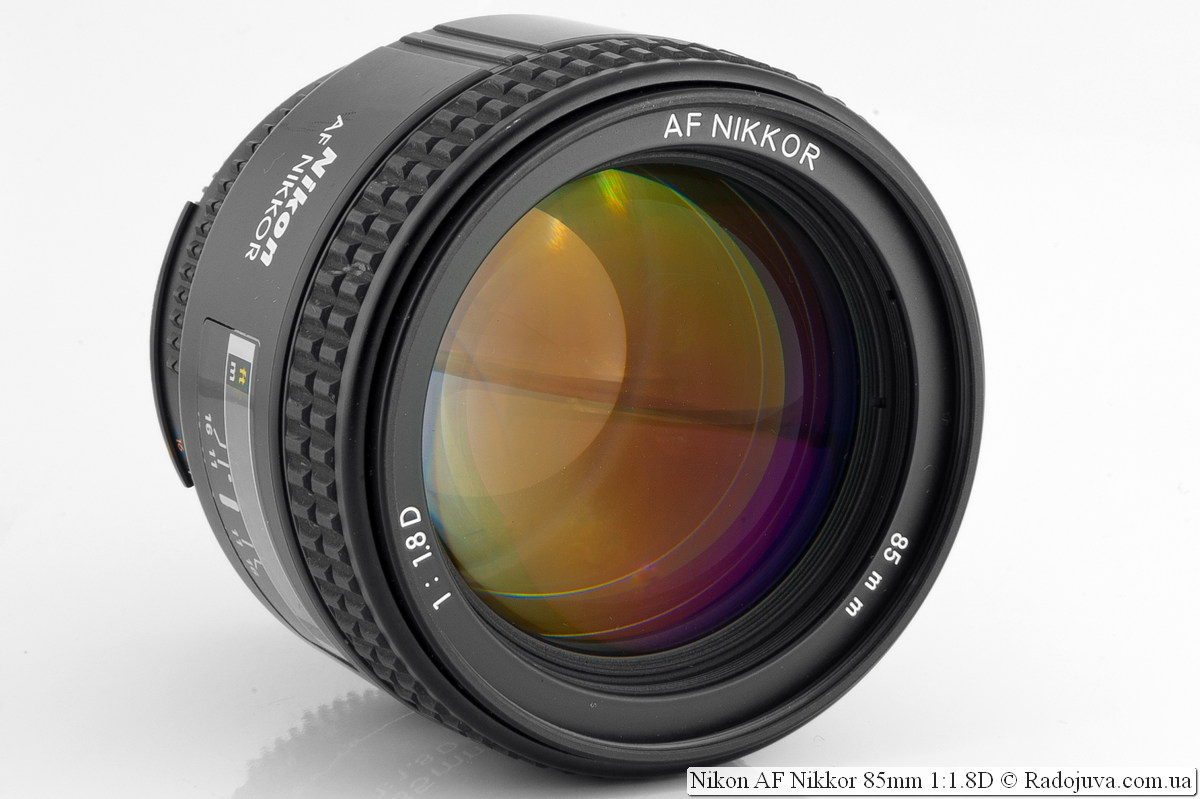
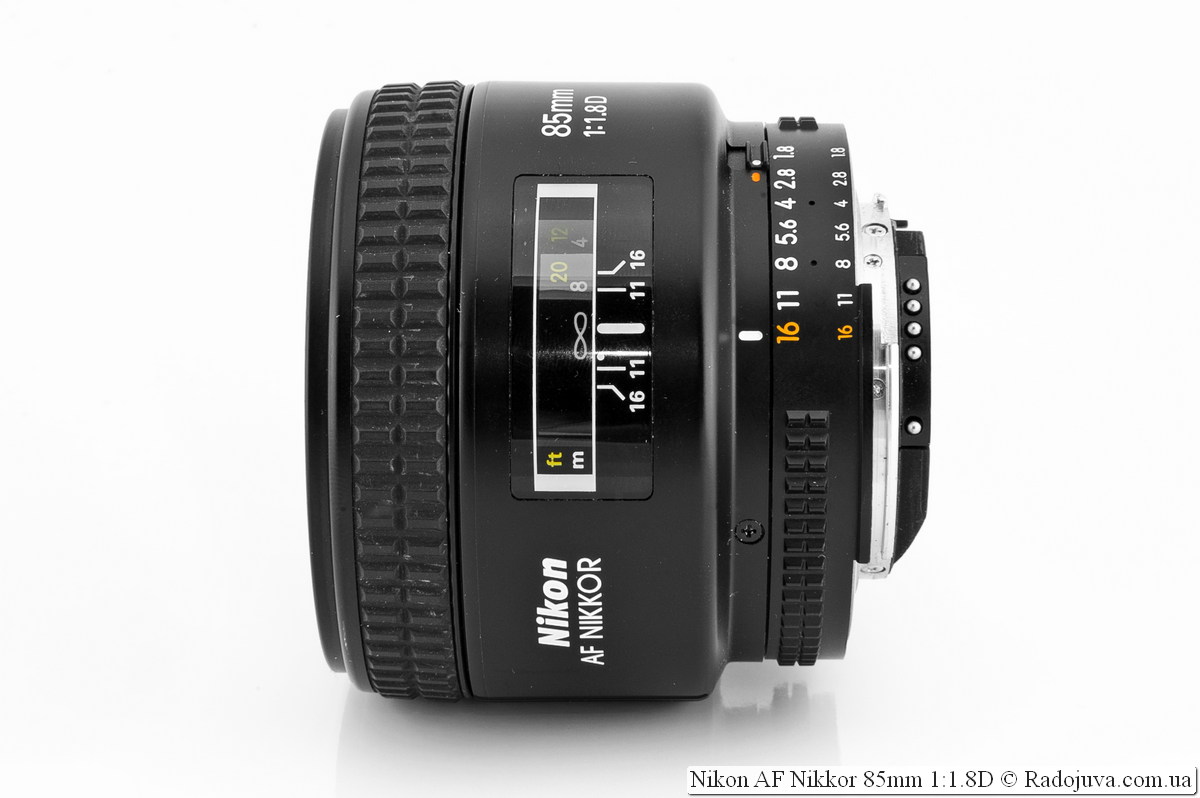
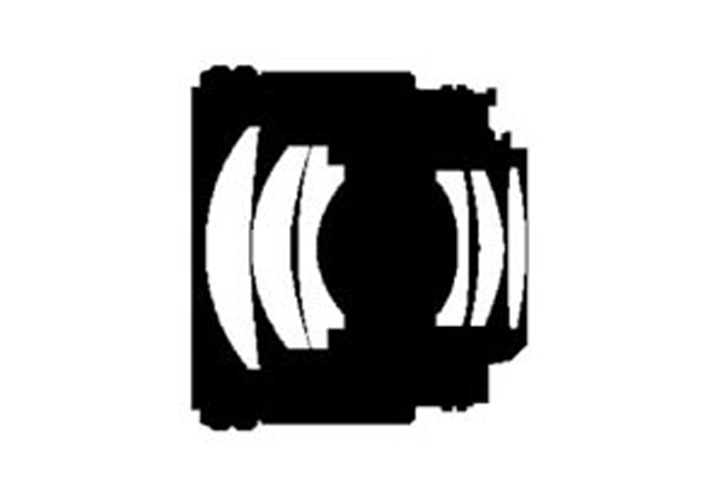
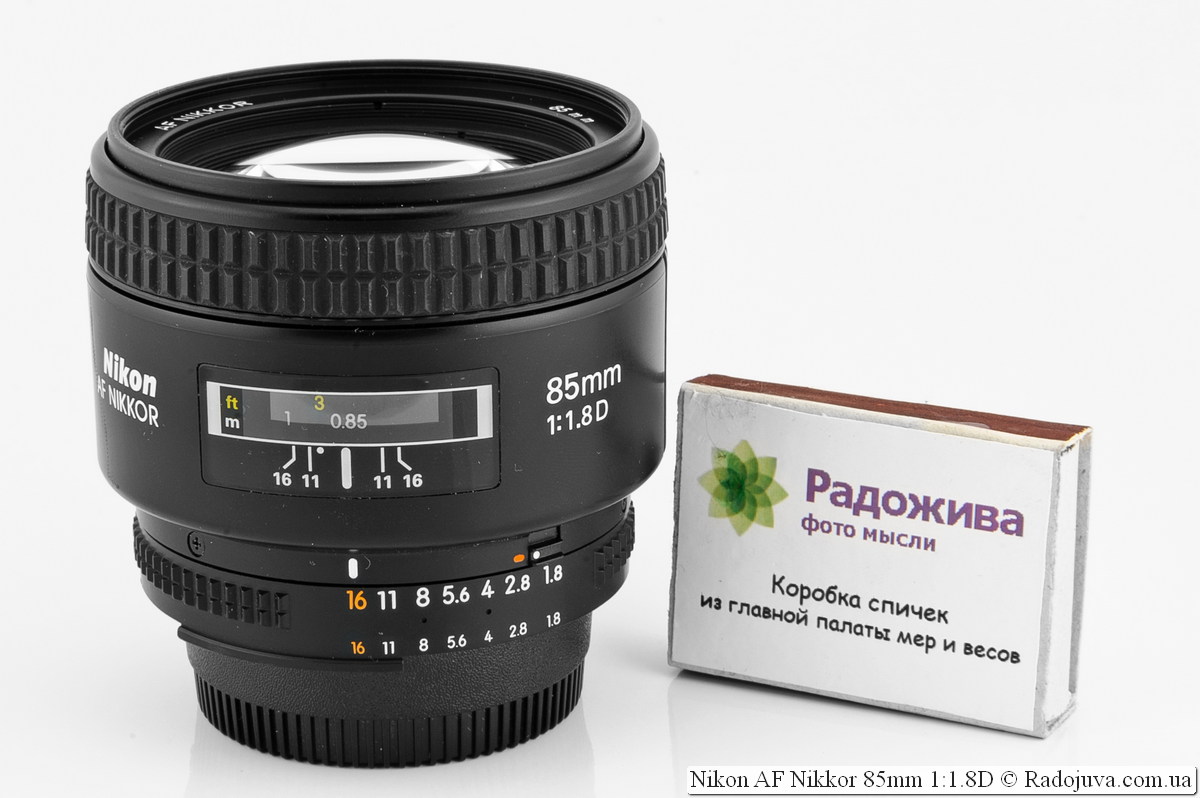
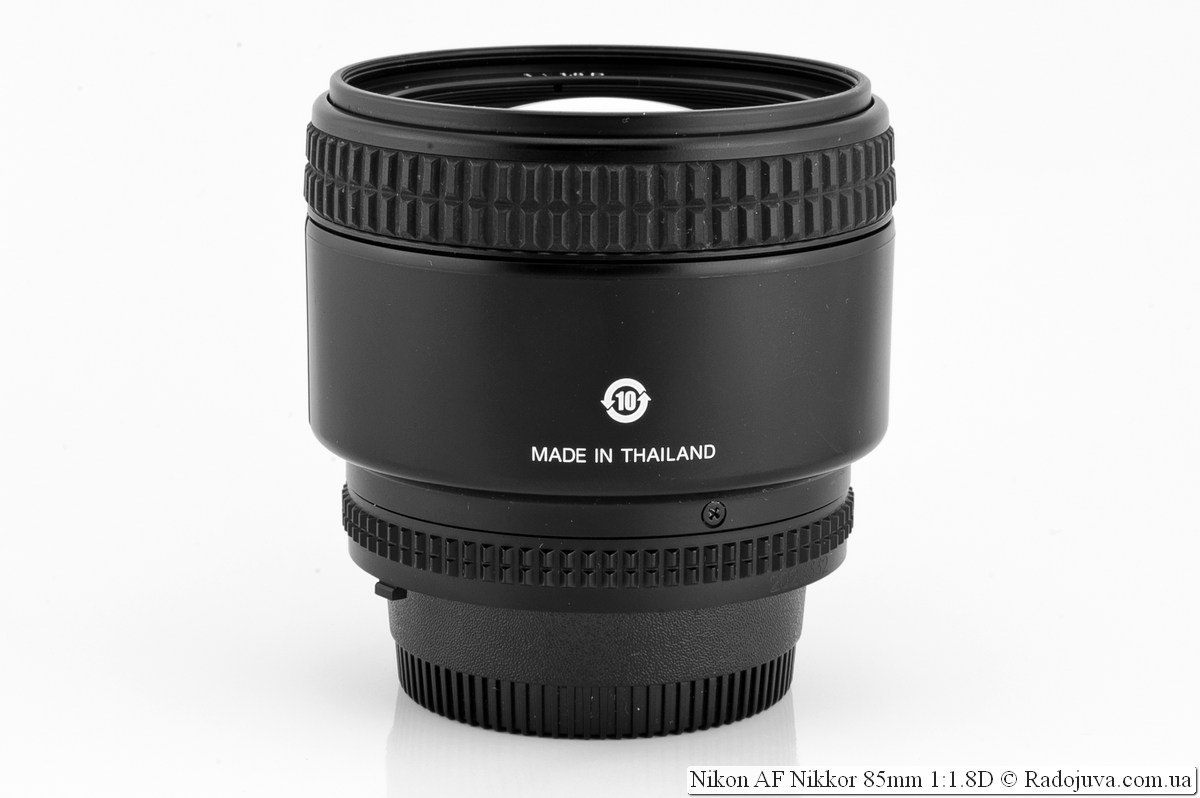
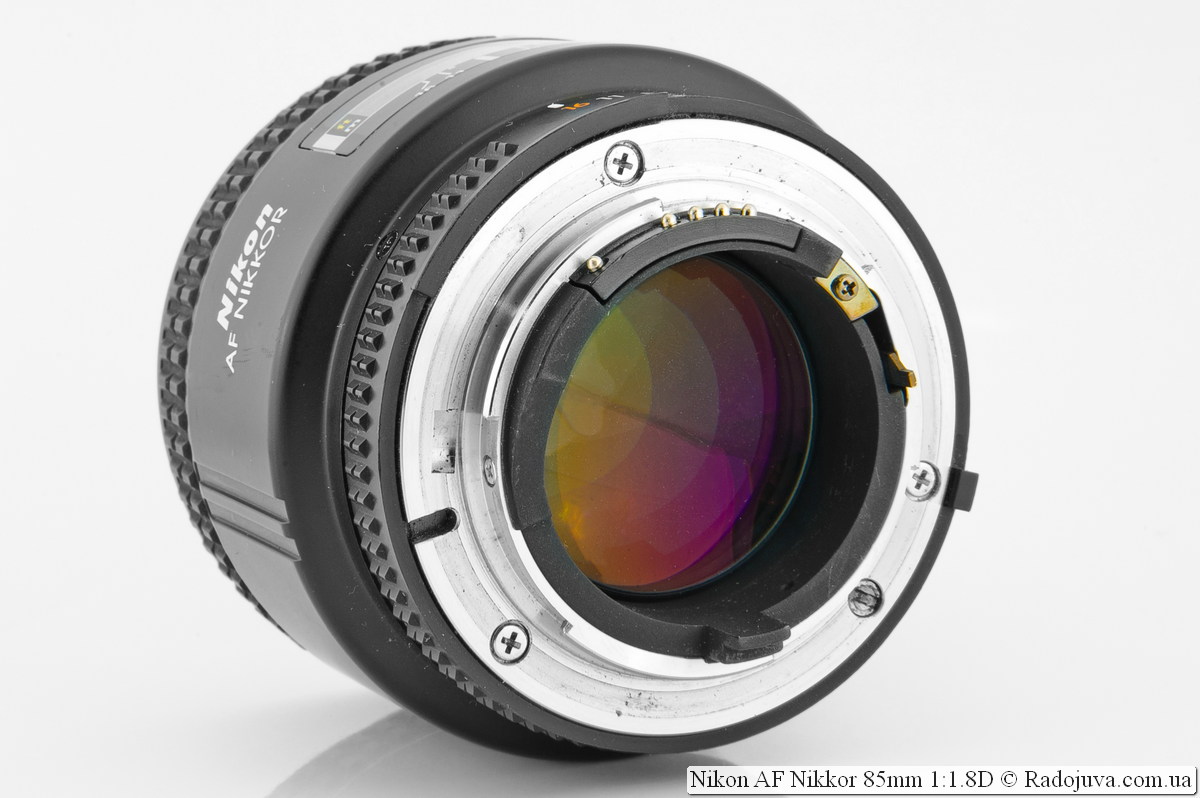
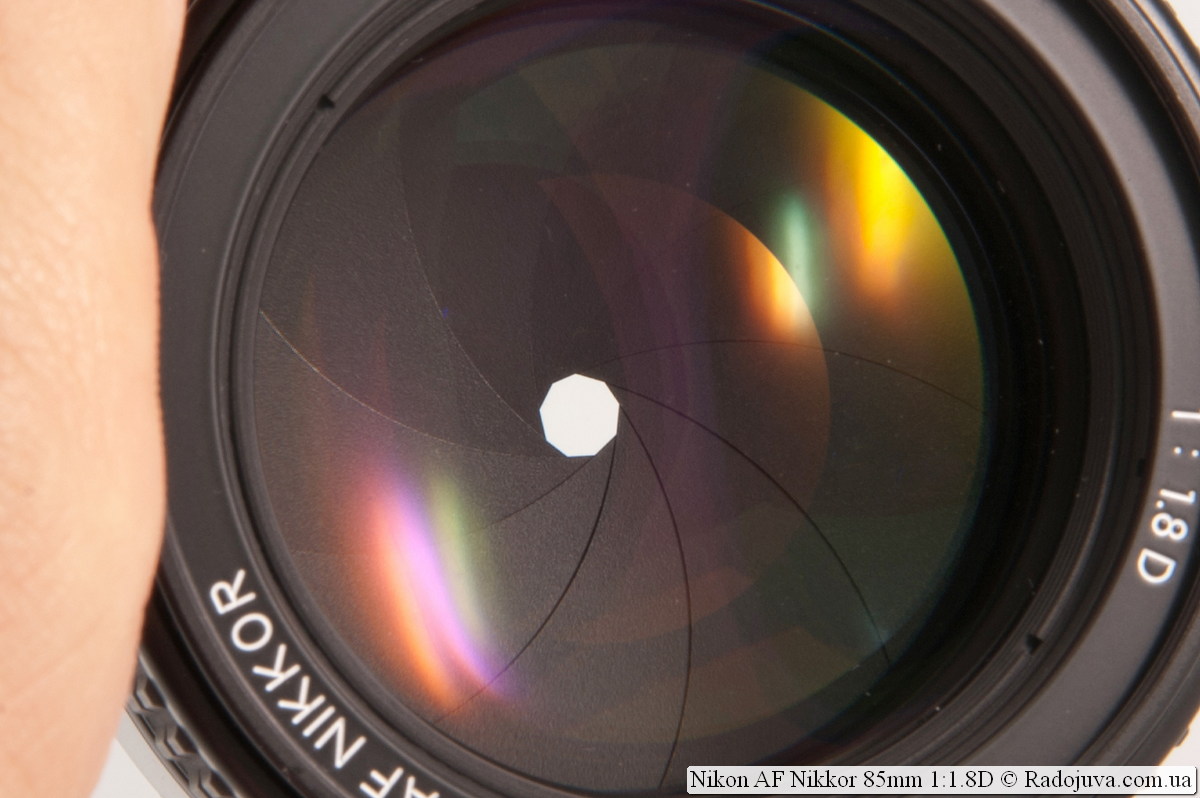
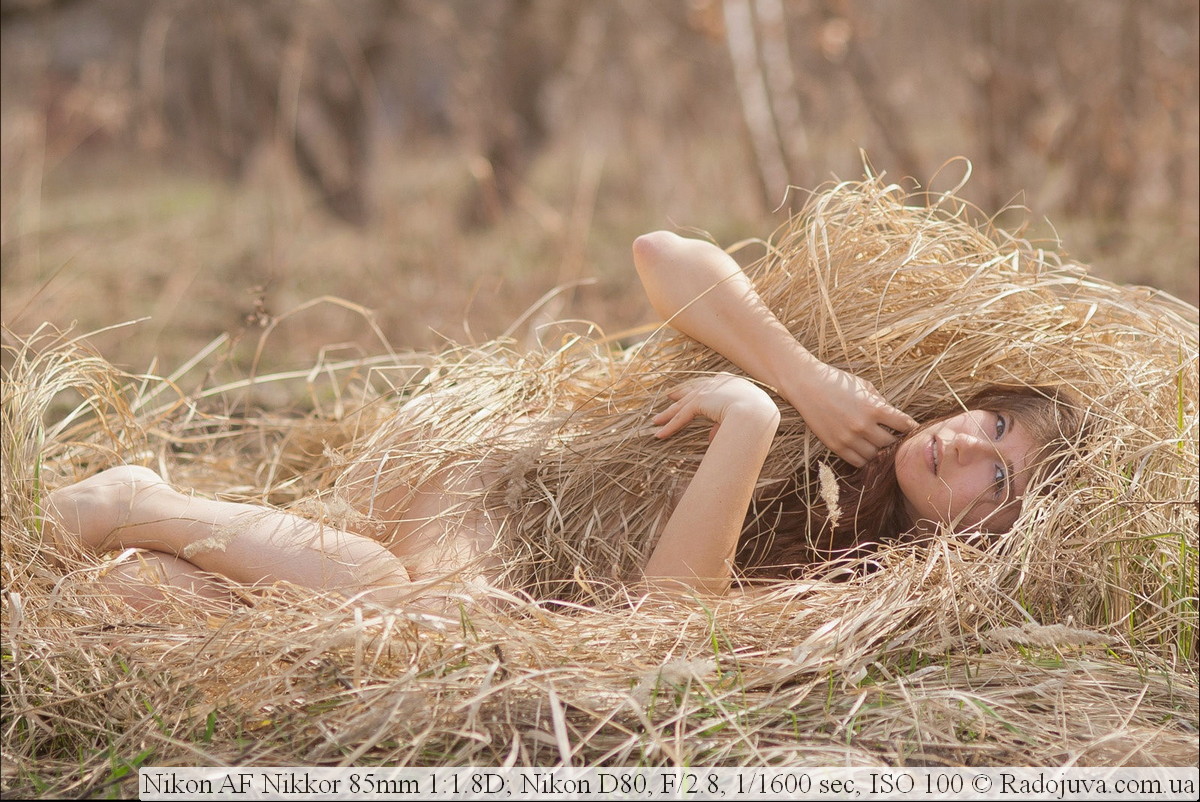
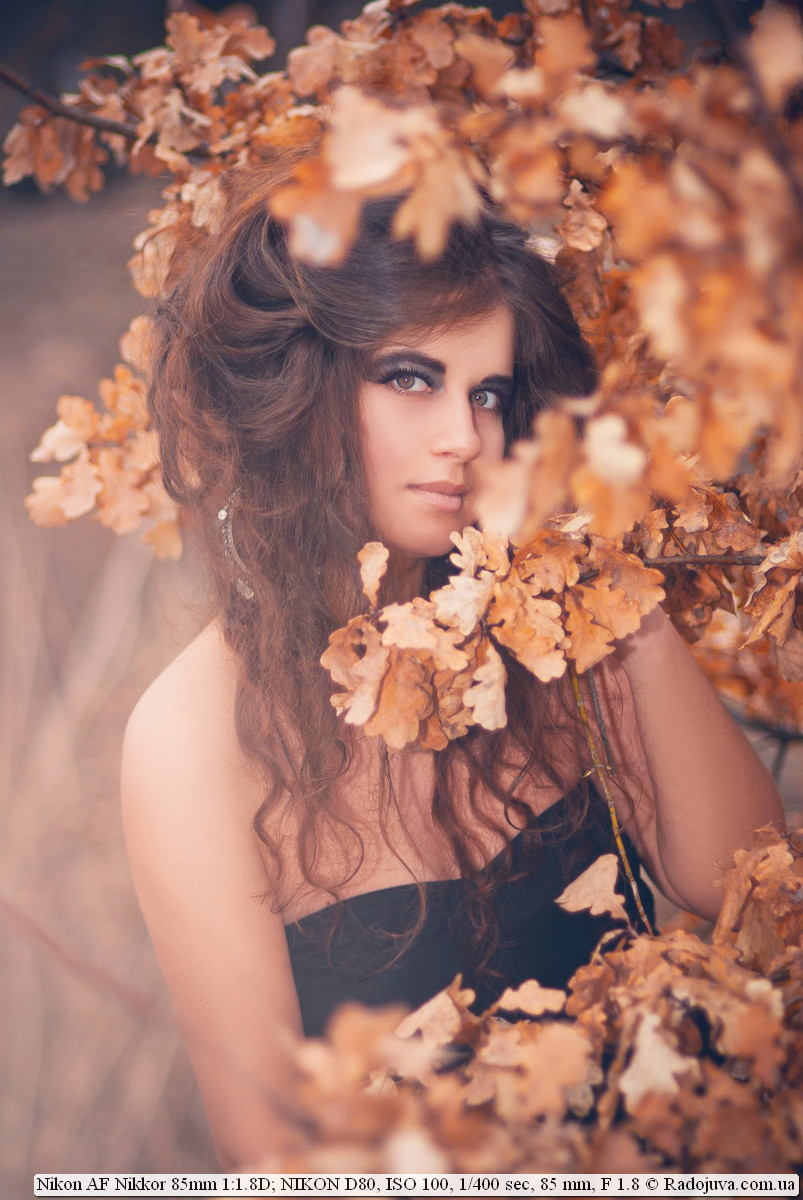








































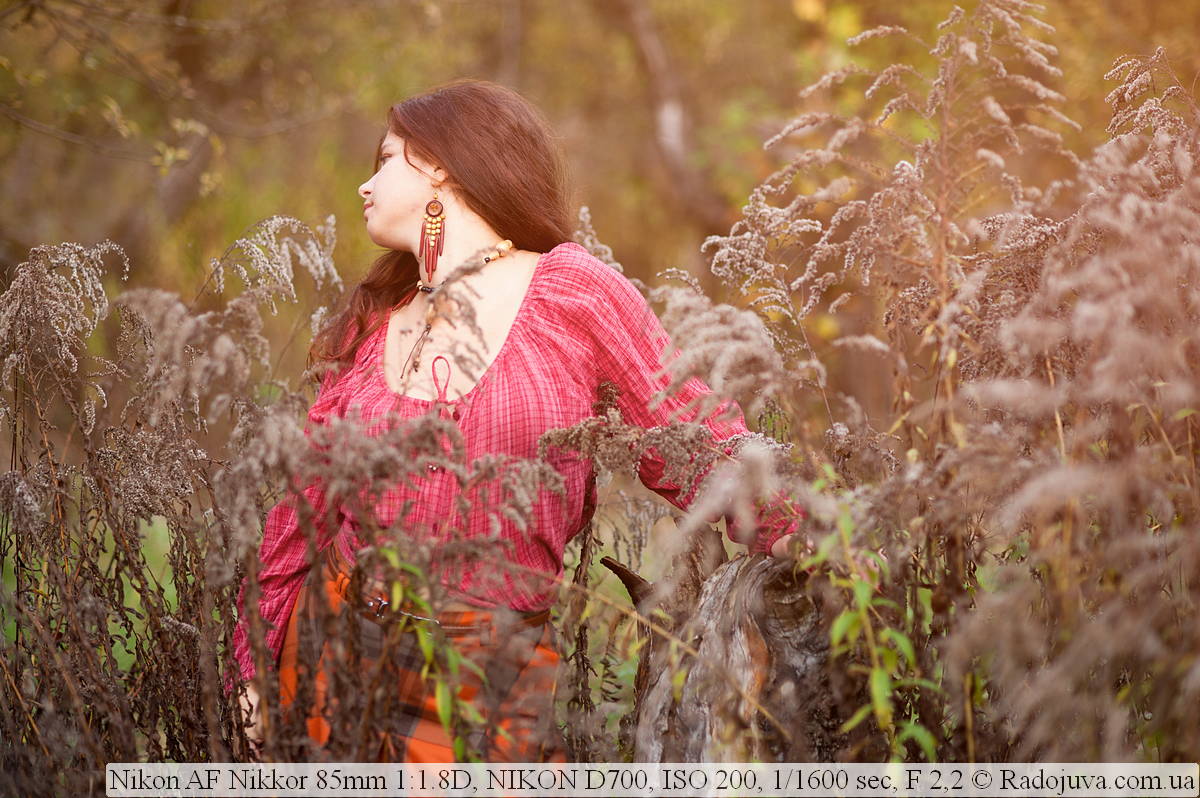
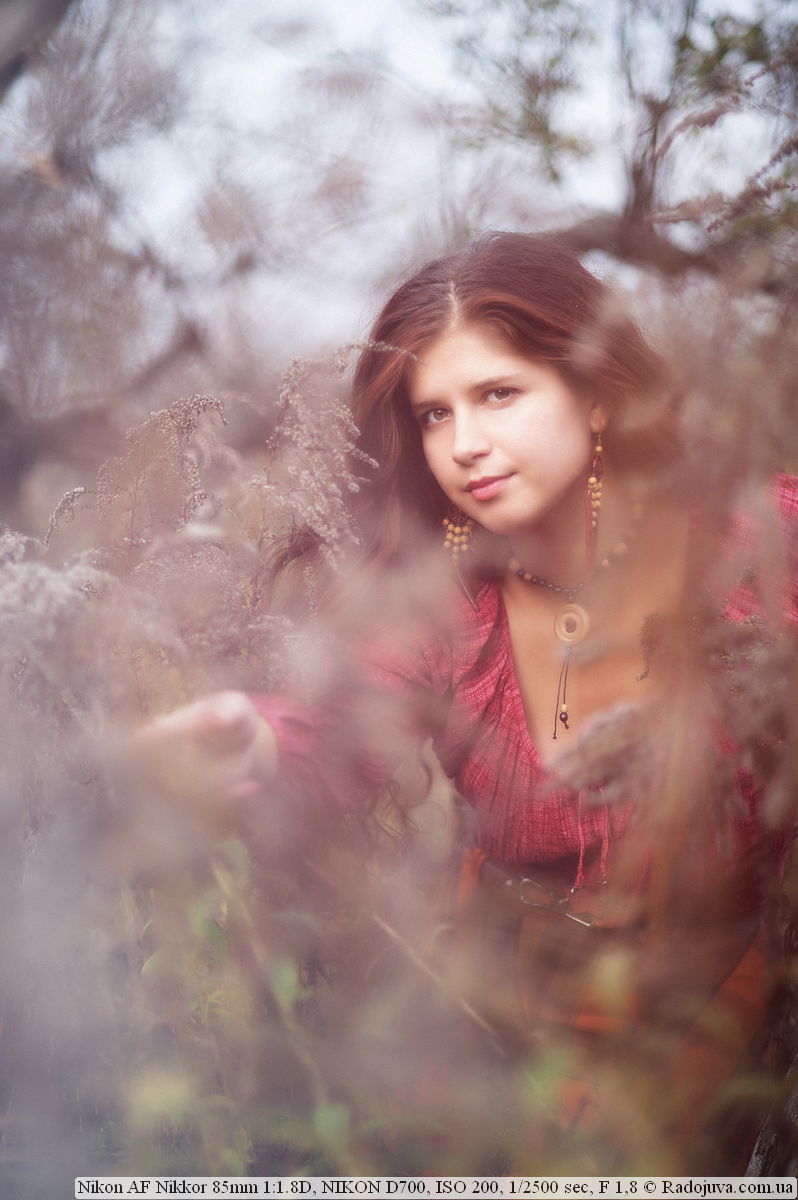
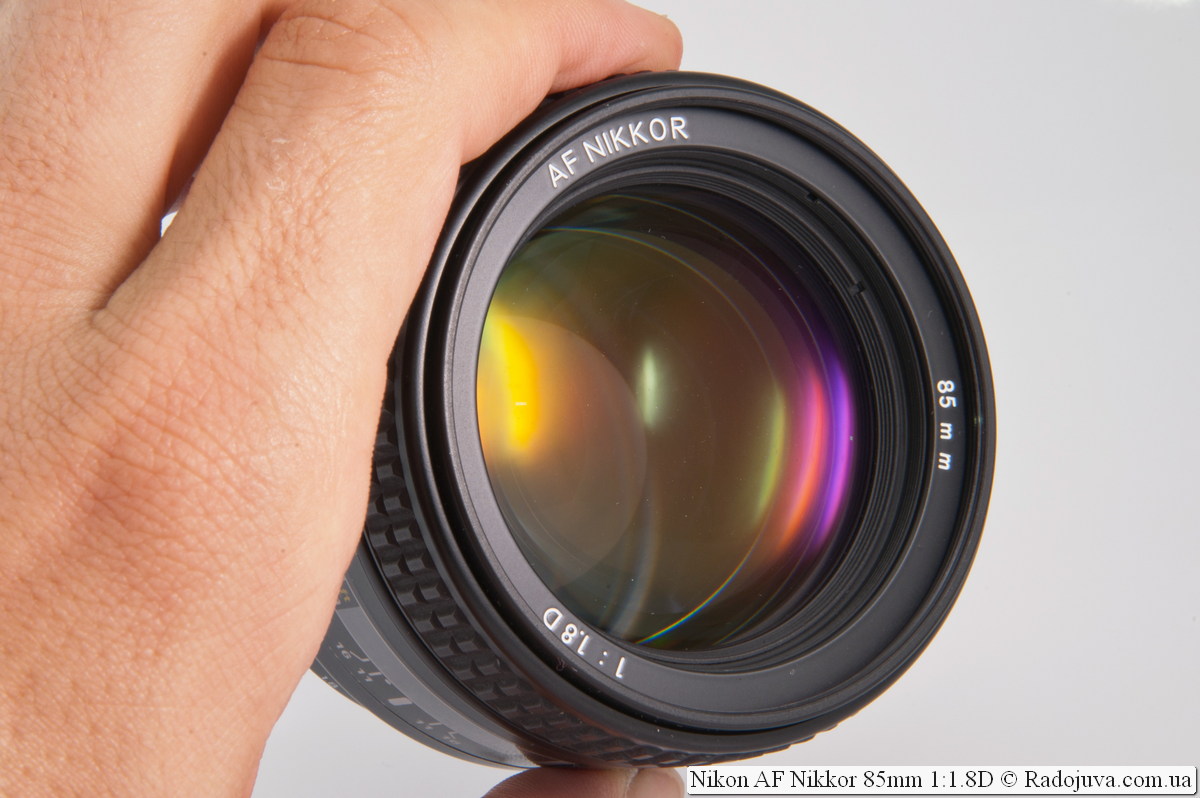
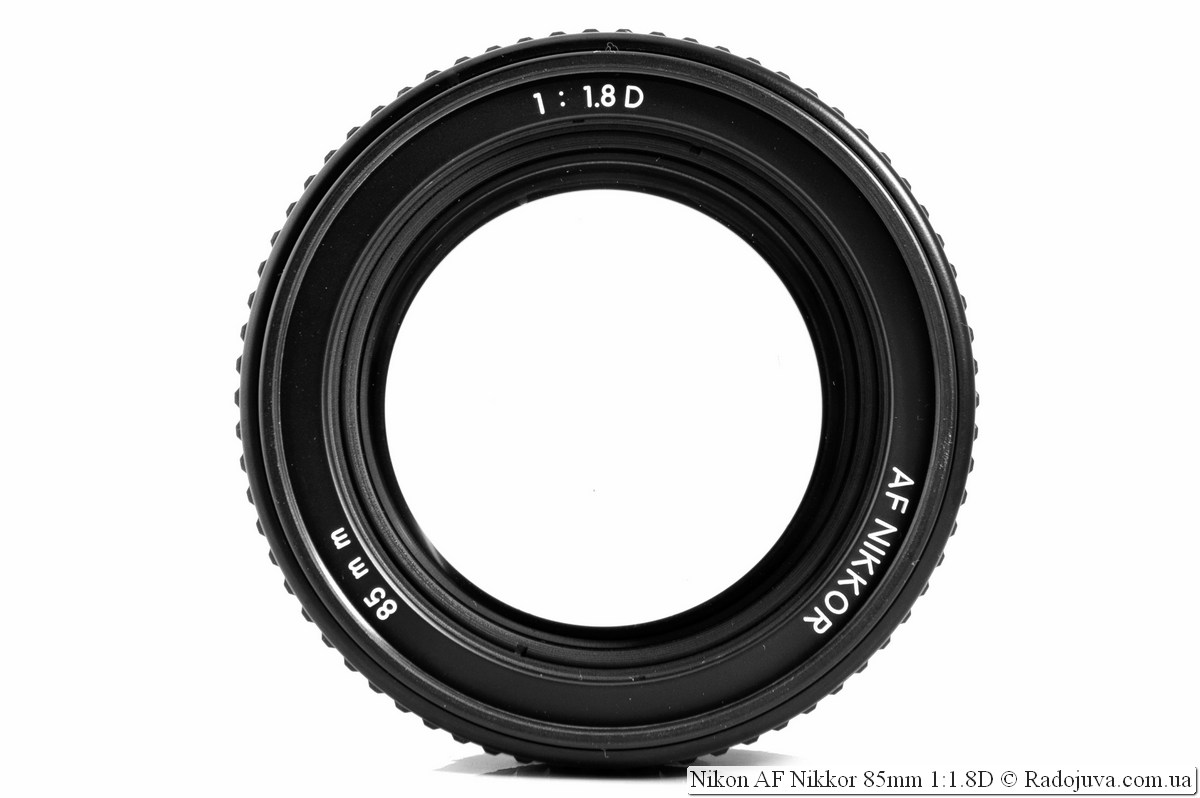

Arkady, what do you think? When switching to full frame, will the beautiful effect of the pattern and bokeh remain? Or is it worth it to look towards 105/135 already? those. Is 85mm focal length enough for a beautiful portrait in full frame?
A beautiful portrait can also be taken for fish, this is a matter of skill. Yes, at a full frame 85t only blooms, but in nature it is a bit short, but in the room just right.
ATP, well, I think you understand me)))
The conversation is about the focal length .., just when switching from 50, to 85 - the effect is amazing), but when switching to full from 85m, the effect will be the opposite?)) Purely mathematically - on the crop 50 = 80, 85 = 130, respectively, and back the same ..? It turns out that the legendary glass on the crop “50” is not indoors (too long), and not outdoors (too short), and with “85” it is also in full frame ... (((
Help me decide. I’m finally confused in choosing a lens. I’m shooting a Nikon D3100 camera with a kit. 18-55 lens. I want to buy a new lens. Photographing? mostly? I want to get a vivid picture, a beautiful side. At first I thought to take, for these purposes, Nikon 50mm f / 1.8G. But after thinking, I realized that in a month or two I would want something better. Therefore, I tend to buy a more expensive and better one, in my opinion, Nikon 85mm f / 1.8G. In the focal length I’m a full teapot, but as far as I understand, it brings the picture very close. How far will I have to go back, for example, to photograph a two-year-old child at full height? And is this lens suitable for full-height portraits (for children) or is it better to take 50mm f / 1.8G for these purposes? The lens is required for shooting on the street. In the room I can take pictures with whales. I will be very grateful for the advice. Thank you in advance.
I think that 50mm is still better ... taking into account the crop-factor, 75mm is an ideal focal length for portraits ... at least in full height, at least for chest or front ones .. Moreover, 50mm gives a pretty decent image with good bokeh. 85mm is 127mm on the crop, everything is more difficult here .. not only will you have to move much further (and in a city in tight streets) this is not always possible, moreover, the shutter speed should be at least 1/125 (or better shorter) to avoid blurring your photos ... Better take the 50mm 1.8 AF-S and perfect your shooting technique and creative intent - this is really better than buying an 85mm and “waiting for masterpieces to be shot”. I will repeat one of the most frequently used expressions by Arkady: “The main thing is HOW to shoot, not WHAT”.
I shoot portraits on a crop of 135mm f3 / 5 it turns out normally, I'm used to it))
50 1.8 is really rather narrow for rooms and rooms (on crop), 35 1.8g will be for your d3100 (it crop) universal poltiynik for both home and for the street. 35 1.8g take
Guys, please do not get confused! Focal length does not change! 50mm (FX) on the crop will also be 50mm. The only difference is that when used with DX lenses, the field of view narrows to an equivalent 75mm in full frame. Therefore, when using a 50mm FX lens on a DX camera, it does not become 75mm, but simply the field of view will be less. Thus, for a portrait, 85mm remains preferable due to the lack of optical distortion.
50 mm for the crop is the most portrait lens, or the new 58 mm, and the distortion depends directly on the distance to the subject, in order to take a person waist-deep, you need to come close and the distortions will increase, you need to move further to a longer focal length, in order to remove it by the waist, accordingly, the distortion will decrease, the further the less distortion, and so from 50 mm on the crop it is already without distortion and, accordingly, 85 mm in full size. Strongly large focal lengths make faces wider and flatter, which doesn’t look very good, the fact is that we are used to seeing people from about 2-5 meters, for example, when talking. As for the matrices, for each existing size there is a portrait focal length, it equals the double diagonal of the frame (in this case, the matrix) and I wanted to answer the above, how to use 85 mm, for example, on a matrix whose size is 7 mm diagonally)) portrait focal length will be approximately 14 mm))
Well done Denis, fully support.
why in the review it is written about the amendment B2, in a warm watchman, like A2
Better yet, buy a manual for a penny
Samyang 85 mm f / 1.4 AE AS IF UMC
Do not be afraid of manual focus, especially when shooting portraits, there is time to aim.
Moreover, this lens has a chip that confirms manual focus (in the viewfinder and sound) when the subject is in focus.
The quality is amazing. And if you also shoot video, then in general a fairy tale!
Good day! Arkady, tell me please 1,8-85D and 1,8- 85G. Are the pictures very different or not? completely confused in reviews, photos, tests, etc. I am inclined to the D-version because of the price. But doubts torment me) The D7000 camera, so far, with time I plan ff.
I myself also choose everything between the 85mm 1.8G and 1.8D versions. I have two carcasses D7000 and D600. I read a lot of reviews clearly everyone praises 1.8G but the difference is 150 pounds (about 200 cu) So I can’t understand if it’s worth overpaying. Definitely I like photos with 1.8G from different reviews, only with 1.8D I did not find much. As I understand from the reviews of Arkady, he shot 1.8G in the fall at different times of the year (photos are lively juicy) and 1.8D seems to be in the winter. Therefore, it is difficult to judge. Since I don’t do commercial photography, I bow more to 1.8D. I think I need to take a 1.8D try if it's my focal point to make upgdade on 1.8G.
here http://www.pixel-peeper.com/ You can see examples.
If you don't see the difference, and money is critical, take D off hand.
If money is not critical - G.
Again, they have different bokeh, and this is more a matter of taste than quality. For example, I don’t like the D-version, but, if I’m not mistaken, Arkady likes D. more. Well, or liked it. )))
I like both lenses, my thoughts come down to the fact that 1.8d is not so much worse than overpaying for 1.8g. In general, I recommend 1.8g.
On the film photo is a fairy tale from the review! Arkady where do you digitize the film in Kiev?
At home, details - https://radojuva.com.ua/2013/09/endorphin/
Yuri, where do you see the photo from the film?
Look carefully And again: examples of photos on film:
Arkady! Please help me decide which lens to choose for the d600 85mm1,8D or 1,8G. Image quality is very important. Thanks!
If you have the means, then of course - 1.8G.
Good afternoon! I can't find the answer anywhere, so I decided to contact you. Can this lens be used on a Kiev-19 camera, or can I somehow damage it (lens)?
Yes you can, nothing should be to him.
Arkady, please tell me - is the quality (accuracy) of focusing the D and F versions on the D800 and D610 different? If so, how much?
Or is the total amount of "goodies" still on the side of the newer G version of the lens?
These thoughts appeared after reading about the fate of your 50G (engine failure), I began to think about the D version of the 85mm lens.
Yours!
I didn’t use these lenses with the d800 and d610, I can’t say for sure. But there is an assumption that the G version focuses more accurately.
Arkady!
This is probably an offtopic, but still I’ll ask.
Which photo equipment stores are most correct in work with a client and which are NOT to be visited.
Can this be discussed with you?
I am not an expert in photography equipment stores; I personally only care about the quality of the products, which can always be checked in a 14-day period, and returned if something is wrong.
Kind people! Tell me please.
There is a used Nikon d7000, with it were whale 18-105, helios 81n and zenitar 50mm.
And so acquired the coveted Nikon AF nikkor 85 mm 1.8 D.
and then the frustration came. I got a glass, set the aperture to 16, as indicated in the article, fixed it with a lever, but the camera still does not see the lens !!
what could it be!?
and how to identify the problem?
why he indicated all the lenses used, so that it would be clear that the camera is in contact with the manual and is normal.
and only here is such an ambush ...
the former mistress of the lens says that she had no problems, the reason for selling the glass was only the lack of an AF drive in the camera itself, I hoped that everything was ok in my d7000, and there was such an ambush ... hh * n with it with autofocus ... FOTIC SIMPLY does not see the lens.
I really hope for YOU!
Universal tip - wipe the contacts on the camera and lens with alcohol.
Set the camera to M mode
And how to determine the D or NON-D version?
Arkady, tell me about the not "D" version. what inconveniences may arise in your work? is it worth paying attention to? thanks!
Only not the best flash work in TTL mode.
Arkady, hello. I face the choice of Nikon 50mm 1,4 or 85mm 1,8. I have d90. The task is to shoot portraits, wedding couples. There is a Nikon AFS 35 mm 1,8G Nikon AF 70-210 4-5,6 D, as well as an 18-105 AFS kit which. Immediately 2 lenses will not pull. Fifty is probably easier to shoot, and with 85 ki the picture is probably more beautiful. So I think. I had a 50mm f1,8, but it seemed to me rustic in drawing. Sincerely, Alexander
At 50 1,4 the figure is the same as 1,8, you can not distinguish them, as well as 70-210 and 85 1,8.
Good afternoon!
Please help with advice; I am an amateur photographer, I shoot with Nikon 3200, with a whale 55. I often indulge in the Helios lens from Zenit - amazing bokeh! By the way, I found all the information on Helios from you, special thanks!
Now I want to buy a Nikon portrait camera with autofocus. The main task is to choose a portrait lens with a bokeh as similar as possible to Helios. Since Helios still takes time for a good shot, more precisely, 1 frame out of 5 turns out to be clear, without blur. And sometimes you need to catch the moment in a split second, and set it up on Helios ...
That suggest?
Thank you!
Hello. I have a Nikon D7000. My question is, what approximate distance should I go to take a person at full height on this lens?
Hello! I get only a shoulder portrait, or waist-deep (maximum) for this I am no more than 1,5 meters from the subject. For full growth, you need to shoot on a tripod and in LV mode. I have an adapter without a lens, so a small focal length. I saw photos with an adapter with a lens, though on Canon - very cool. I rented a portrait lens, but I didn't like the result. I have not seen such a color, light, softness, shading, boke like Helios on other lenses. I mean a photo without any retouching. On Helios, if you set it up correctly, you don't need to do anything, edit, ... the pictures are magical. But the lack of infinity and autofocus makes this lens extremely amateur for me. I am looking for an analogue but with autofocus and a long focal length.
Ulyana, first determine what optical scheme your Helios model has, then look for autofocus glasses with this scheme for your camera, then study the photos from your favorite ones and read the reviews because “I rented a portrait lens, but I didn't like the result. I have not seen such a color, light, softness, shading, boke like Helios on other lenses. I mean a photo without any retouching. On Helios, if you set it up correctly, you don’t need to do anything, edit, ... the pictures are magical ”this is all subjective.
Today I purchased a Nikon AF 85mm f / 1.8D lens, carefully (later, as it turned out, not thorough enough), checked its technical and visual condition, as I took it from my hands. The lens was purchased in May of this year in Italy (all the docks are in stock, the serial numbers are the same), according to the previous owner, it was practically not used, because he bought Nikon AF 85mm f / 1.4G just a few days later.
Indeed, the lens is outwardly in perfect condition, there is no back / front focus ... But later, when I wiped the lens with a microfiber, I found a slight backlash in the rear focusing unit of the lenses. Can you please tell me if this is acceptable in this lens or is it a malfunction?
I really didn’t think that the D90 in conjunction with this glass would produce such amazing quality :)
Please show me what?
In the comments I would like less naked akhs, and more different photo examples! How is it in the afternoon in the thick shadow, on the water without a polar, and in the evening, indoors (such as a sport, a concert)?
https://500px.com/photo/90008711/beautiful-girl-among-the-pines-by-yuriy-segeda?from=user_library
https://500px.com/photo/88657513/autumn-lady-by-yuriy-segeda?from=user_library
https://500px.com/photo/88903019/wishmaker-by-yuriy-segeda?from=user_library
Lens 85 1,8AF not D version
Well, this is a very strong post-processing (at least the last two), what is left of the native drawing? The first photo even in the original?
the first in the original, in the second processing is present, in the third processing the most
Well, I understand, thanks. All three are good!
Thank you :)
Ballroom dancing competitions. Filmed in DX mode - standing on the balcony, it was far from the floor.
Nikon D610, f / 2.5, 1/160, ISO-1100.